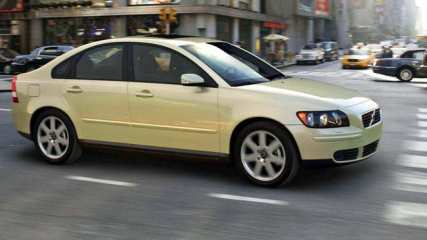Used Volvo S40 review: 2006-2009
By Graham Smith · 15 Jul 2013
After years of safe, sensible, but somewhat stodgy cars Volvo reinvigorated its offering with a series of smart, stylish and more appealing models. The popular S40 compact sedan was a major part of that transformation after replacing the 440 in the late 1990s.NEWAn all-new S40 appeared in 2004 and it was a big step forward in both style and substance, with an updated range of models, a responsive chassis, and a diesel engine option. Four models made up the range, starting with the entry level S, following came the luxury LE, the D5 diesel and the sporty T5.They were smartly laid-out inside, with practical controls, comfortable seats and ample cabin space, although those in the back seats might have felt a little cramped. Three engine options were offered, starting with the 2.4-litre five-cylinder petrol engine, with a 2.4-litre turbo-diesel engine and a sporty turbocharged 2.5-litre petrol engine as attractive alternatives.The base petrol engine delivered decent performance, while the diesel stretched the distance between fuel stops nicely and still offered good performance, but the sparkling performer of the range was the turbocharged petrol engine in the sporty T5. There was a choice of manual and automatic transmissions available, depending on the model.Most of the range was front-wheel drive, but the T5 boasted all-wheel drive. If the engines delivered the zip, it was the chassis that delivered the real enjoyment with its nimble, surefooted handling that was light years ahead of the lumbering old Volvo of the past.NOWLike all modern cars the S40 bristles with technology and as we see every day here at Carsguide that can mean trouble. That's not to suggest that every car will breakdown, but it's a fact of today's motoring life that the cars we drive are often struck down with maladies that are unexplainable and frustrating.It's important to approach the buying process with that in mind and thoroughly check any used car you might be thinking of buying. Even the most thorough check might not identify an underlying issue, but it's vital that a check is conducted.That might be a road test, and we don't mean a quick thrash around the block, but an extended road evaluation taking in as many varied road and driving conditions as possible. It should include highway speed as well as normal suburban speed, you should go to a car park and test it at walking speed, manoeuvre it as you would if parking it, drive it over speed humps, around roundabouts, over smooth, rough, even gravel roads.While you're doing this you should be listening for odd noises, clunks, rattles, vibrations, anything that seems out of the ordinary. But don't rest there, take it to a Volvo specialist and have them cast their expert eye over it. While you're at it check for a service record, one that's credible, and preferably from a mechanic who is familiar with the Volvo brand.Regular oil changes are critical to engine life, so it's important that the recommended service routine is maintained. Many S40s will have passed or fast approaching the time when the cam timing belt needs to be changed. The change on earlier models was scheduled at 120,000km or eight years, later ones went out to 150,000km or 10 years.SMITHY SAYSAn attractive mid-sized car that offers safety, features and good on-road performance at an affordable used price.Volvo S40 - 2006-2009Price new: $39,950 to $54,950Engine: 2.4-litre, 5-cylinder, 125 kW/230 Nm; 2.4-litre, 5-cylinder, turbo-diesel, 132 kW, 350 Nm; 2.5-litre 5-cylinder turbo, 162 kW/320 NmTransmission: 5-speed auto, 5-speed man, FWD, 6-speed man (T5), AWD (T5)Economy: 7.0L/100 km (TD), 8.7L/100 km (2.4), 10.1L/100 km (T5)Body: 4-door sedanVariants: S, LE, D5, T5Safety: 5-star ANCAP.








.jpg)



